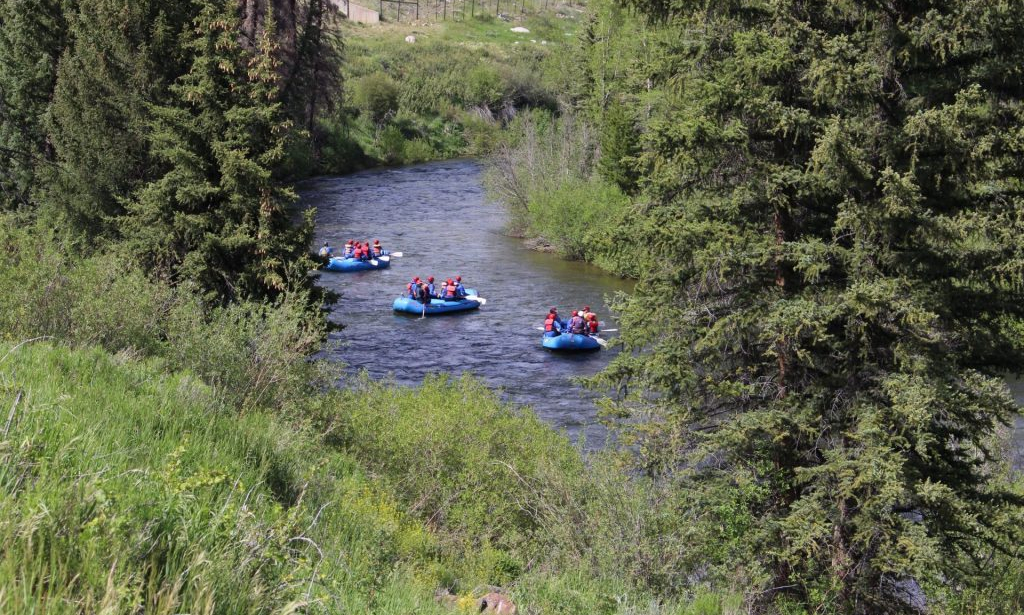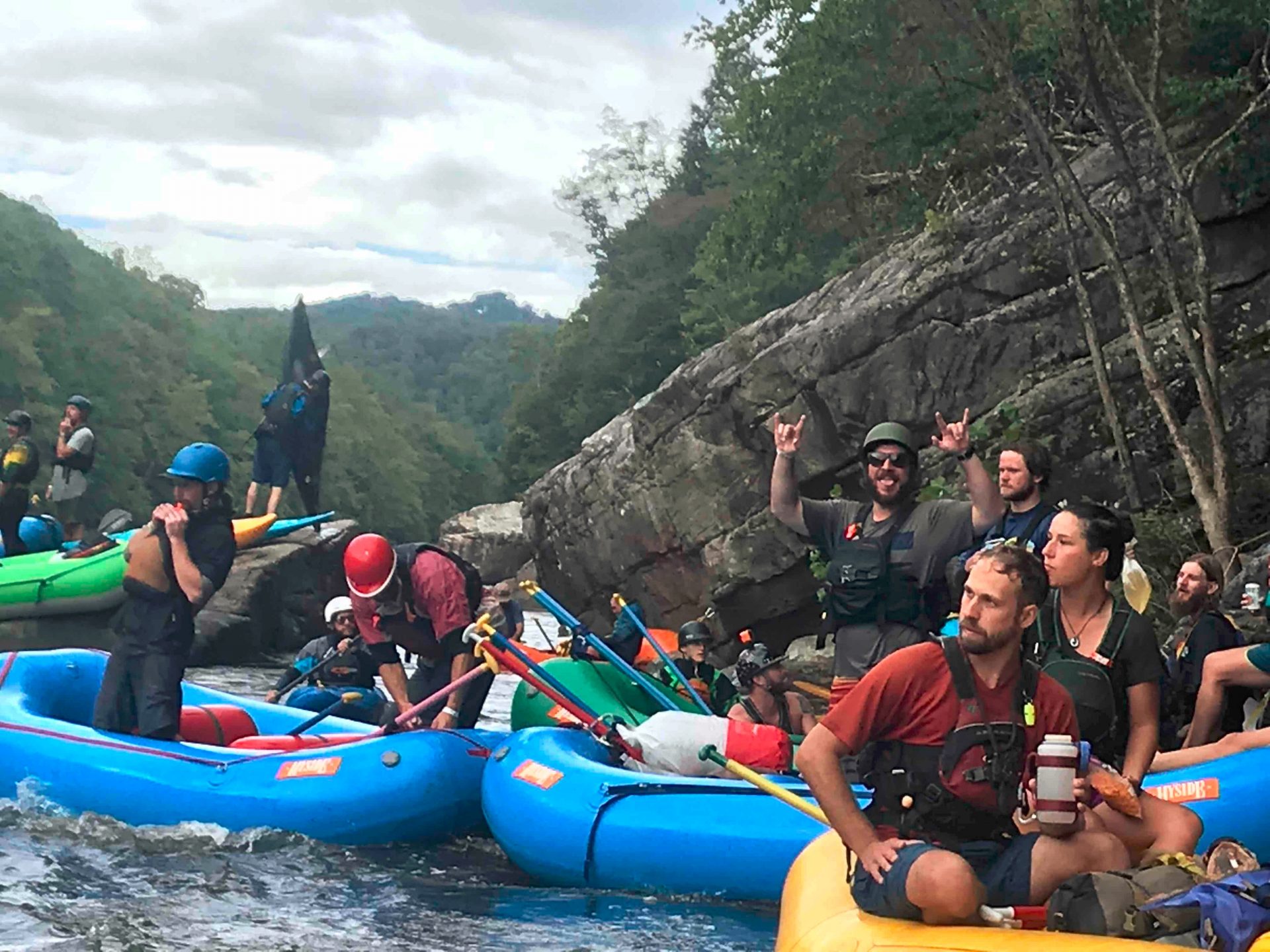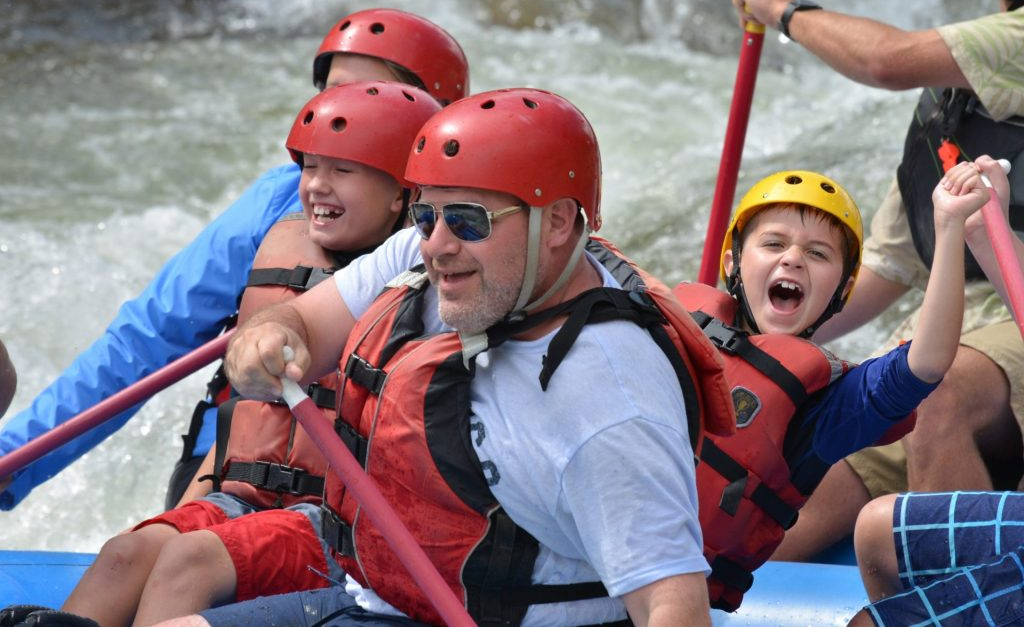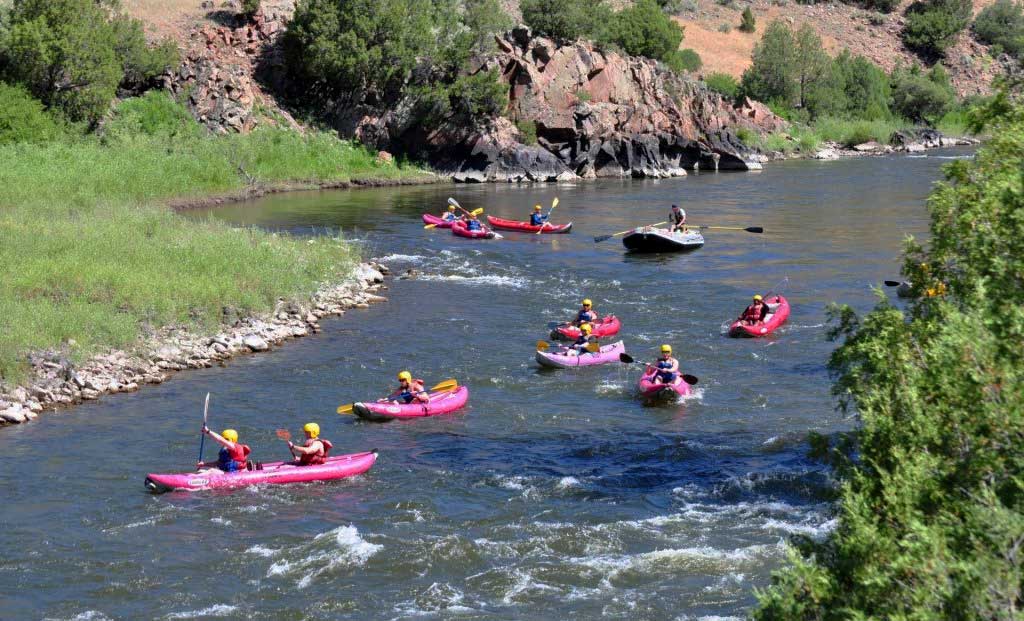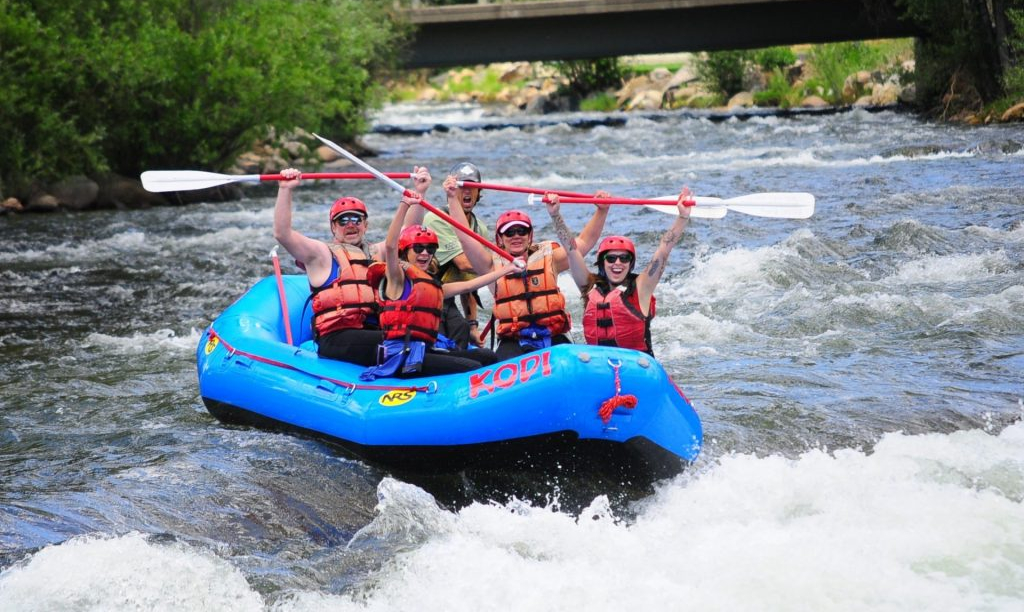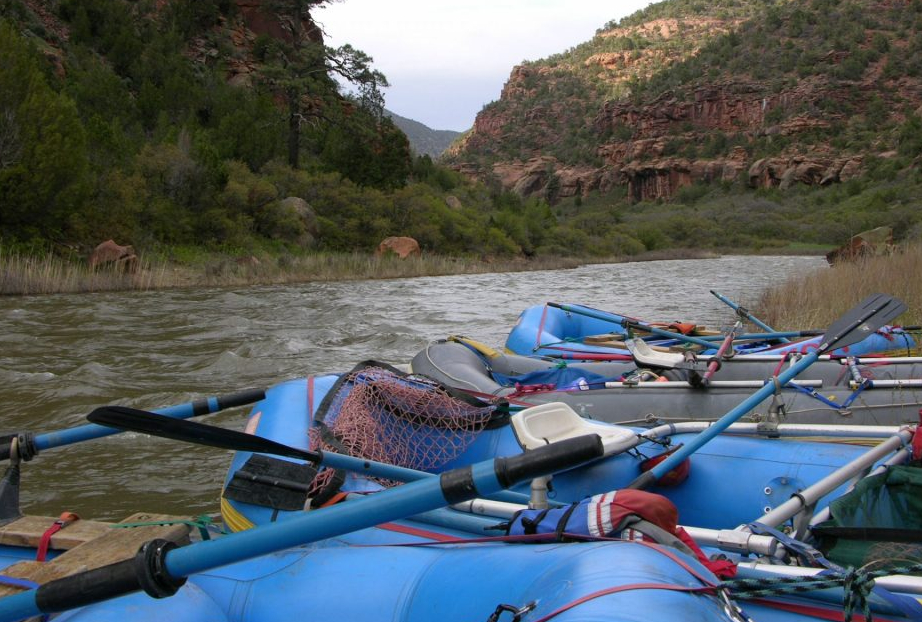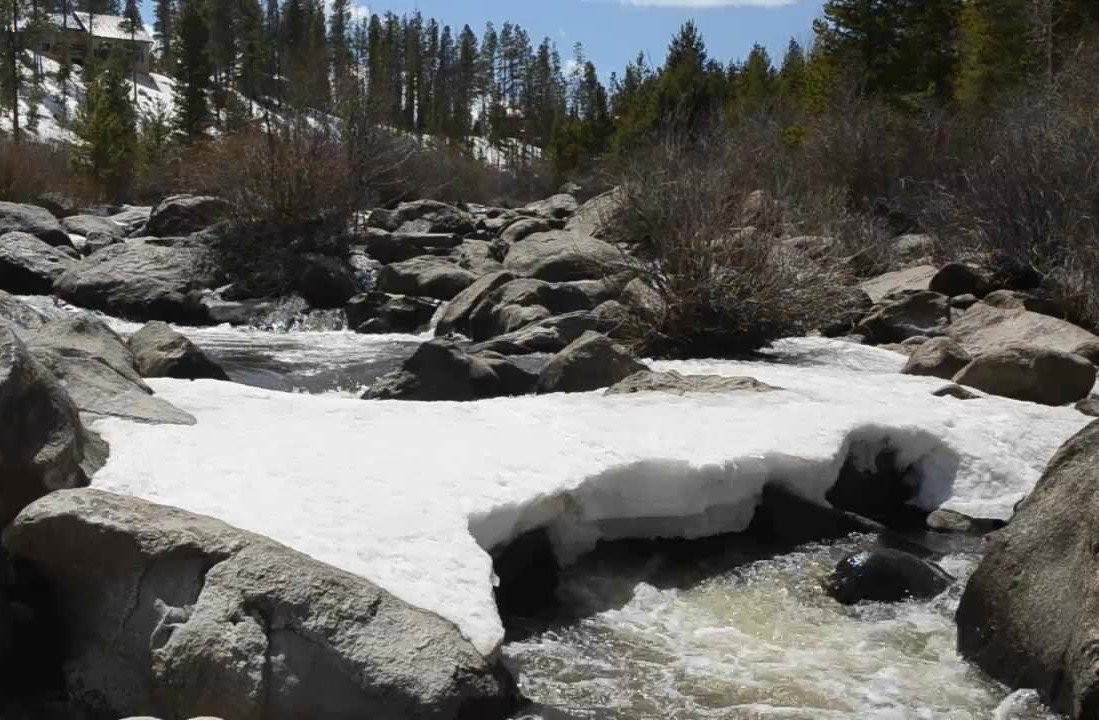KODI’s Rivers: An Overview
Arkansas River
The Arkansas River starts as a patch of melting snow in Leadville, Colorado, a city rich in mining history and famous for its 10,200-foot elevation. The Ark (as locals like to call it) gains momentum as it flows past some of the biggest mountains in Colorado, benefiting from their abundant snow melt in the spring and summer. From its headwaters, the Arkansas River deliver more than 100 miles of whitewater, making it the most popular river for rafting in the American West. The river’s appeal lies in its wide variety of trips and easy accessibility.
Blue River
The Blue River is roughly 65 miles long and is a tributary of the mighty Colorado River. Flowing from the Dillon Reservoir Dam just above the town of Silverthorne to the confluence with the Colorado River at Kremmling, the Blue River is easily a candidate for Colorado's most scenic river. Lined by cottonwood trees and crowned by the rugged Gore Mountains, the Blue River winds a scenic course through ranch land, and its public access points are popular among anglers and kayakers alike.
Clear Creek
Clear Creek is a tributary of the South Platte River that flows through Clear Creek Canyon in the Rocky Mountains directly west of Denver. It descends through a long gorge to emerge on the Colorado Eastern Plains where it joins the South Platte. Clear Creek is unusual in that it is a stream named "creek" fed by a stream named "river."
The Upper Colorado River
The Upper Colorado River Basin, defined by the river network above northern Arizona, is comprised of four states—Colorado, New Mexico, Utah, and Wyoming. These states contribute to the vast majority of the water coming into the Colorado River Basin, primarily through winter snowpack.
Colorado, specifically, is known as the Headwater State because it’s home to the headwaters of four major rivers: Platte, Arkansas, Rio Grande, and Colorado. The Colorado River flows west out of the slopes of Rocky Mountain National Park and connects to several tributaries, including the Animas, Eagle, Dolores, Yampa, Blue, and Roaring Fork Rivers.
Ten Mile Creek
Ten Mile Creek is a stream in Summit County. It rises above Copper Mountain Ski Resort and follows next to Interstate 70 for several miles before emptying into Dillon Reservoir. The creek and the paved trail that follows alongside it are easily visible from Interstate 70 between Frisco and Copper Mountain Ski Area.
Dolores River
A long and winding river in southwestern Colorado, the Dolores flows through canyons packed with enormous ponderosa pine and high sandstone cliffs in brilliant oranges and reds. The river continues its journey from the alpine scenery into the high desert and through canyons dotted with amazing white water, ancient ruins, and untamed wilderness.
The KODI Team Attends Gauley Fest
After a full and busy season, our staff kicked back and headed to West Virginia for Gauley Fest, a rowdy weekend of whitewater fun!
Gauley Fest began in 1983 as a celebration of the derailment of a hydro-electric project that would have stolen one of the whitewater community’s most precious resources. Today, it remains the American Whitewater Association’s largest fundraising effort.
Although its roots were planted in a noble cause, the internationally renowned Gauley Fest is now mostly regarded for its party-hard nature. But at its heart, it’s still a celebration of not just the Gauley River, but rivers everywhere. And it’s one hell of a good time.
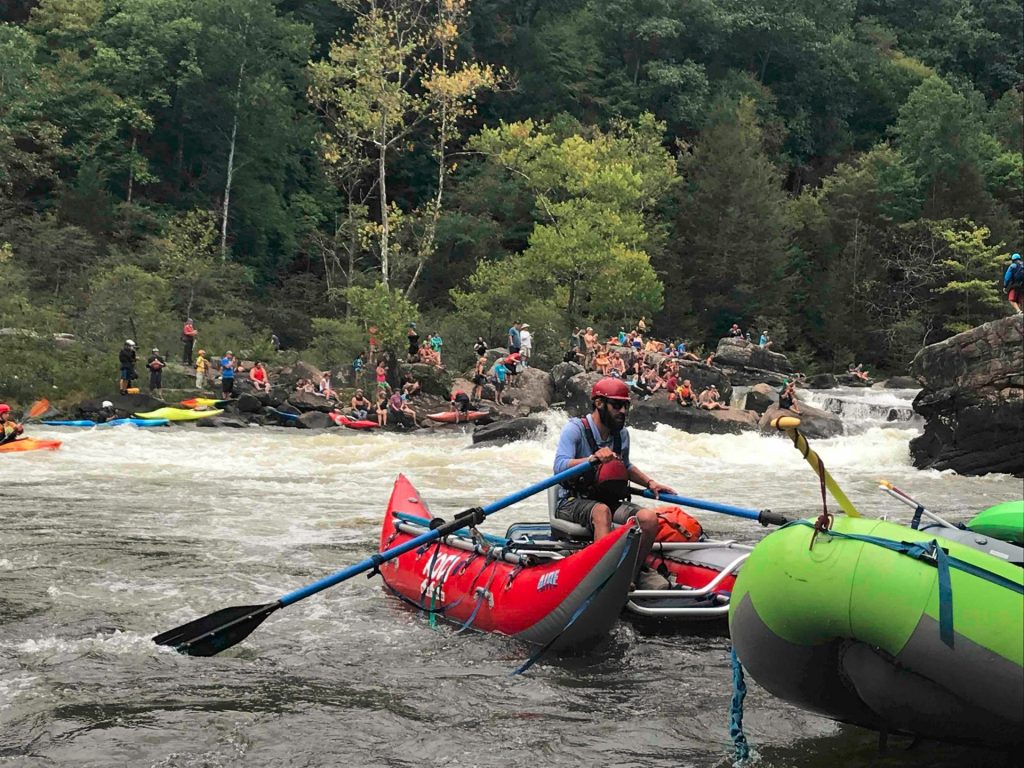
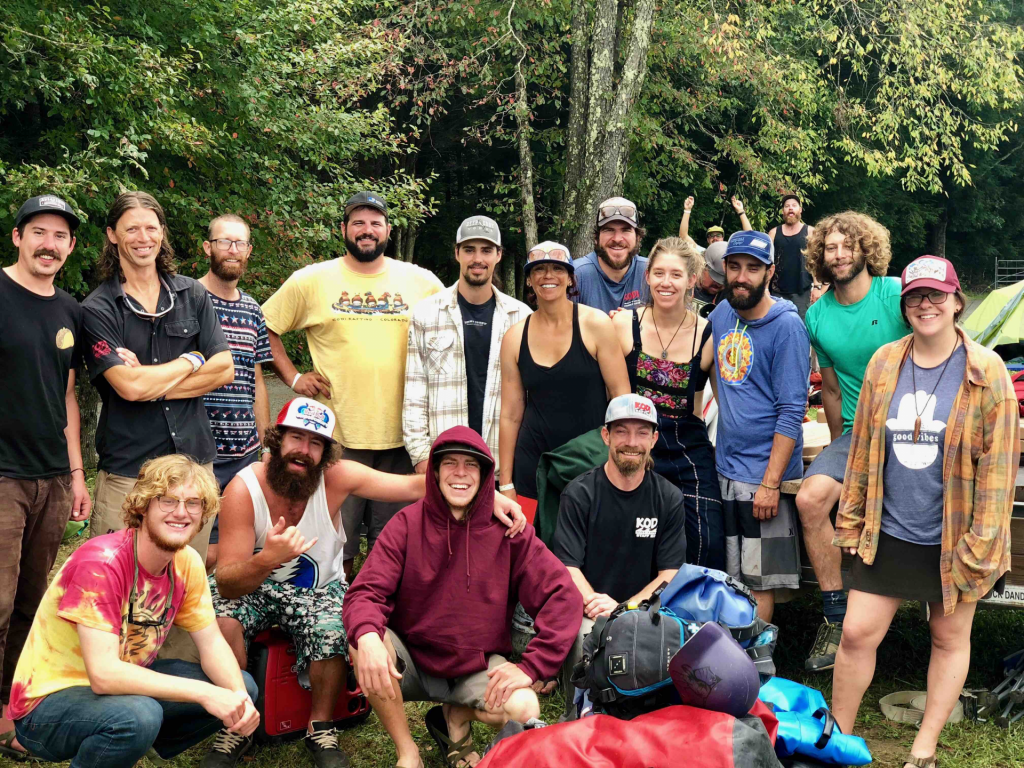
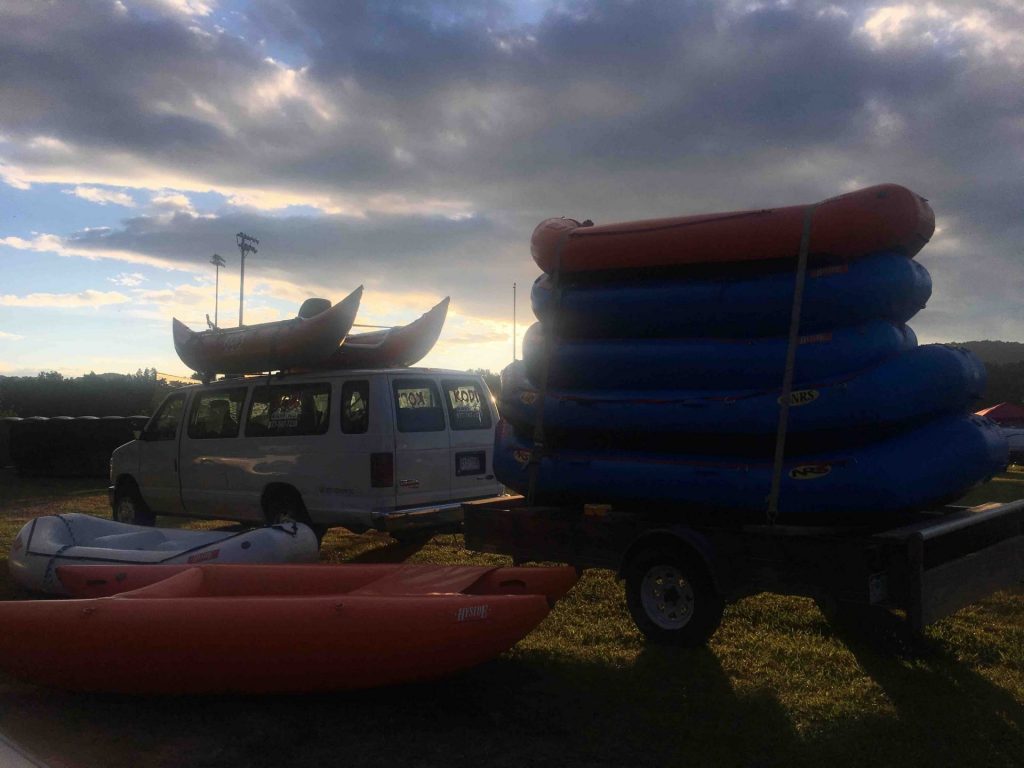
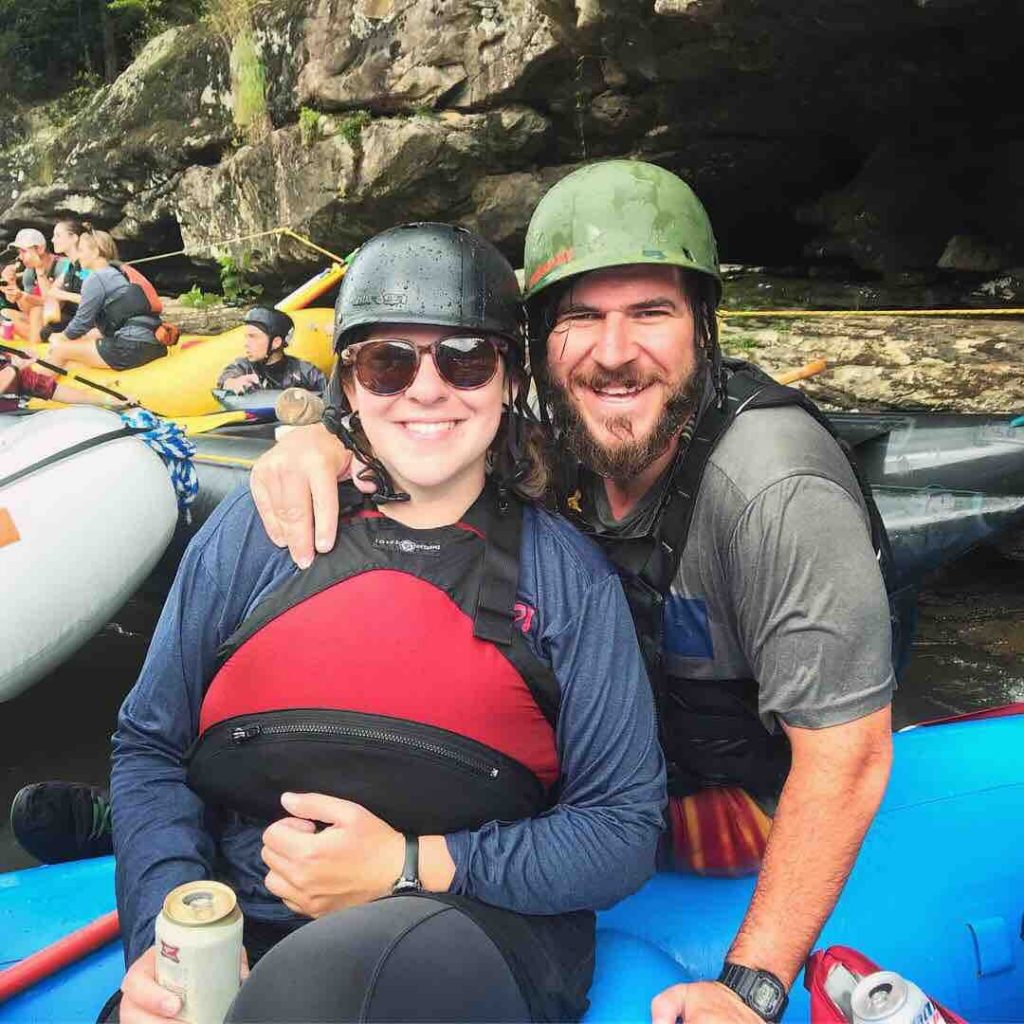
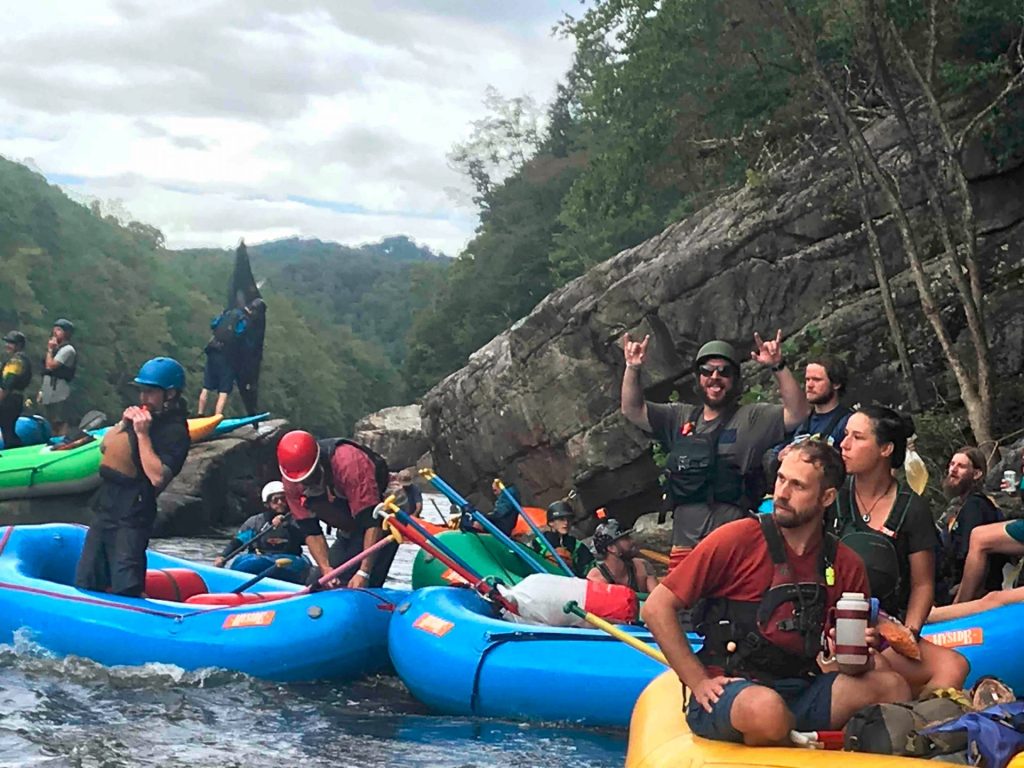
Three Tips for Finding a Trusted Rafting Outfitter
If you’re planning your first river trip, you want to make sure you choose a rafting outfitter that’s going to make your experience on the river as incredible as it can be. Several factors comprise great river trips. From safety to fun and everything in between, each of those factors should be considered when choosing a rafting outfitter.
We know, considering all of these factors makes the choice sound intimidating. Top it off with the fact Colorado has dozens of raft companies to choose from, and the job borders on overwhelming. However, if you follow our advice, you’re sure to find the rafting company that’s right for you.
While planning, we think everybody should pay attention to these three major details about the river rafting company you intend to book your trip with.
A Spotless Safety Record
The dangers of whitewater are no joke, so you want a river outfitter that has an excellent safety record. It should have the right safety equipment and offer straightforward, easy to understand safety demonstrations that will keep you safe.
Personable Guides
Establishing rapport with people starts with good conversation. Your guide should have the patience to chat with his or her guests as well as be able to talk comfortably about the surrounding wildlife and river history. In return, Your guide will be able to evaluate the comfort level of everyone in the boat before "testing the waters" so to speak. Do you prefer to hit the fun splashy stuff or stay as dry as possible? Either way, a personable guide will make or break your river trip.
Variety of Trips
There is no universal trip right for everybody. Make sure you inform the rafting company about the age, physical condition and swimming ability of each member of your group.
A good river outfitter has a variety of trips to choose from and informed staff who help you find the perfect whitewater rafting trip for you!
Go online for a sense of these factors. When you've narrowed down your options, give them a call and get more details. Ask yourself, are they friendly, do they answer all your questions, are they pushy or don’t seem like they have the time to answer all your questions? You can get a great feel for the company by their reservation staff, as it usually will translate into the guide staff on the river.
Colorado’s Upper Colorado River
The Colorado River provides water to nearly 40 million people, flows through nine National Parks, and drives a $1.4 trillion economy. If the Colorado River basin were a country, it would be the world’s 7th largest by economic output.
The Upper Colorado River Basin, defined by the river network above northern Arizona, is comprised of four states—Colorado, New Mexico, Utah, and Wyoming. These states contribute the vast majority of the water coming into the Colorado River Basin, primarily through winter snowpack.
Colorado, specifically, is known as the Headwater State because it’s home to the headwaters of four major rivers—Platte, Arkansas, Rio Grande, and Colorado.
The Colorado River flows west out of the slopes of Rocky Mountain National Park and connects to several tributaries, including the Animas, Eagle, Dolores, Yampa, Blue, and Roaring Fork Rivers.
KODI Rafting runs raft trip on the Upper Colorado River out of Kremmling. The water we raft runs through a unique and beautiful landscape known for its diverse water features, abundant wildlife, and cultural landscape.
Notable sections of the Upper Colorado include Parshall to Blue River, Gore Canyon (where you’ll find extreme class IV and V whitewater), Pumphouse to State Bridge, and State Bridge to Dotsero.
Pumphouse to State Bridge is the most popular section because of its combination of placid waters through pastoral heritage ranchland and more challenging class II and class III rapids in the intervening canyons.
The Colorado River cuts a path through the Gore Mountain Range at the beginning of its long trip to the Pacific Ocean. There are natural hot springs, historic cabins, swimming, hiking, and beautiful scenery. The river is ideal for first time participants, families, and groups of all ages and abilities. The Upper Colorado River is easily accessible from many resorts, including Breckenridge, Vail, Steamboat Springs, and Winter Park.
What to Expect on Your KODI Whitewater Rafting Trip
So, you’ve decided to raft. Good for you! In our opinion, a day on the river is better than just about anything else! Whether you’re floating through Browns Canyon National Monument or taking a quick trip down Clear Creek, we want to make sure KODI Rafting is everything you expect us to be.
Once you find the perfect raft trip for your family or group, this is what you can expect during your day on the river.
You’ll arrive at your designated outpost 30 minutes before your trip’s departure. This gives us time to meet and outfit your group and have you fill out a waiver.Since we experience such a variety in weather patterns and water levels throughout the summer, we suggest making a “Game-Time Decision” as to what gear you’ll need for the day. Our expert staff will help with the decision making.
We won’t let you raft without a Personal Flotation Device (PFD) and a helmet on most rivers. If you choose to slip into a wetsuit, neoprene booties, or a splash top, you’ll have time to get these, too. You’ll store personal belongings in your car, and we’ll hold onto your keys at each outpost.
At the designated departure time, we’ll head to the put-in where your trip leader will give you a KODI pre-trip briefing. He or she will explain all of the “what-if” questions for the day, just like airline instructions do prior to takeoff.You’ll then be divided into rafts, which hold between six and 10 rafters. Your boat guide will give you a little more instruction as to how to sit in the boat, how to paddle, and how they will call out paddle commands.
If you are out with us for a full day adventure on the Upper Colorado or on the Arkansas River, your guides will prepare a hot riverside meal for you while you snack on an appetizer of veggies and dip. KODI lunches also include lemonade and cookies for dessert.
KODI Rafting works with expert photographers who capture the perfect picture of you working your way down an amazing Colorado river. Strategically positioned, these photographers snap a series of photos of your boat as it passes by. Depending on the river you choose, photos will either be displayed at our outpost for you to review or available online shortly after your trip.
Your time with us isn’t quite over once you reach the take-out. You’ll take a short shuttle back to the outpost, during which time, our guides have been known to pass along a few jokes and point out historic landmarks and points of interest. If you have a good joke, we’re sure your guides could us a little fresh material, so bring along your best stand-up.
Back at the outpost, you’ll be able to get into some dry clothes, enjoy a slide show of your adventure (on most rivers), and shop for souvenirs. We happen to have the largest selection of KODI Rafting apparel in the universe.
A Guide to Tipping Your Raft Guide
Great KODI raft guides turn an average rafting experience into an amazing rafting adventure you’ll remember always. If your KODI raft guide has given you an experience to last a lifetime, consider rewarding him or her with a tip at the end of your trip.
While all river guides can get you down the river, the great ones add excitement and fun while ensuring your safety is their number one concern.
A great whitewater river guide also treats each guest with respect and exhibits genuine enthusiasm toward introducing you to the wonders of the river.
A strong guide adds items such as local historical, area wildlife, or geological information to their conversations in the raft. Most importantly, an excellent guide is flexible and attentive to the needs and queries of rafting guests of all ages, abilities, and backgrounds.
So, you want to tip your KODI raft guide. But, how much?
The amount you tip is really up to you. Raft guiding is considered a service industry and many people believe anyone in the service industry, like restaurants, hotel employees, and hairdressers, should get between 10 % to 20% of the total cost of the service. For example, if your trip was $200 and your guide made your experience a memorable one, a $20 – $40 tip would be generous and greatly appreciated!
Tips can be given directly to your guide at the end of your trip or handed off to office personnel at the appropriate KODI outpost. If you forget to tip or run out of money, ask management about using a credit card for tipping. But remember, guides prefer cash.
If you aren’t tipping at all or tipping less than the recommended amount, explain your reasoning. It may make for an awkward moment, but there’s one invaluable word any working stiff can relate to—feedback.
Colorado Rafting Packing List
For many of our rafters, a trip with KODI is their first trip on the river, and almost every one of them is bound to ask, “What should I pack anyway?”
If you’re about to take your first whitewater rafting trip, let us tell you the items you need to pack to make your day on the river as fantastic as possible.
Please know KODI Rafting supplies almost everything you’ll need for your Colorado whitewater raft trip. However, we did say almost everything. Here’s what we suggest you bring:
Comfortable, secure footwear
The best type of footwear to wear are sandals with a secure strap around the ankle. This does not mean Crocs or flip flops, but something secure like Tevas, Chacos, etc. If you don’t have sandals like this, a breathable pair of sneakers works, too. KODI also rents river booties for $5 for a full day and $3 for a half day at some of its outposts.
A bathing suit
Because of Colorado’s quickly changing temperatures and the fact that you may get wet, it’s best to bring layers of clothing on your trip. The base of these layers should be a bathing suit. If it gets hot out, you’ll be happy to be wearing one!
Workout clothing (or synthetic material)
Avoid cotton, jeans, and long pants if possible. Comfortable, quick-drying clothing is great. Any outdoor gear such as neoprene, polypropylene, wool, or fleece is best.
Sunglasses WITH a secure strap
Colorado’s sun is strong and so are many of our rapids. Combine those and you’ll want to make sure your glasses don’t get lost in the river.
Sunscreen
Our beautiful blue skies and high elevation make for crazy sunburns. Always protect yourself with sunscreen.
Water
Not only is paddling a raft a lot of physical work, most of our river trips are at high elevation where water is even more important to stay hydrated. Pack a bottle of water to keep it on hand in the boat.
A pair of clothes to change into after your trip
When you’re done with your trip, you may be wet or cold or both! You’ll be glad to have a pair of dry clothes waiting for you at the take-out.
Spring Runoff: When Colorado’s Rivers Turn up the Heat
Colorado’s snow-capped peaks have starring roles in the Centennial State Show, drawing thousands of visitors every year to ski their powdery slopes.
But when the ski season ends, these snow-capped peaks perform an encore. With warmer temperatures, snowpack on Colorado’s highest peaks turns into runoff that feeds the state's creeks and rivers to the delight of rafters and kayakers.
Peak flows on Colorado's rivers begin in late May and last until the third week of June. During these weeks, it’s about big waves, big holes, and big moves, making for lots of fun. These large waves and high water attract active and adventurous paddlers willing to get wet and paddle hard.
If you're planning a vacation to Colorado or are a local wanting to book a high-adventure raft trip from late May through June, consider rafting the following rivers where spring runoff can create really big waves.
Arkansas River in central Colorado
Clear Creek 30 minutes from Denver
Colorado River in central Colorado
Blue River in central Colorado
Dolores River in southwestern Colorado
While rapid classification on each of these rivers is available, it can be misleading since every body of water is apt to contain rapids of varying intensity during spring runoff. Ever-changing water levels combined with Colorado’s tantrum-prone weather can also make a stretch of river easier one day and much more difficult the next. Get the details you need for each river. Call KODI Rafting today at 970-669-1548.
As a quick recommendation from KODI Rafting, novices interested in whitewater rafting should start smaller and work their way up. We suggest booking a Mild Float or a Fun for Everyone raft trip.

